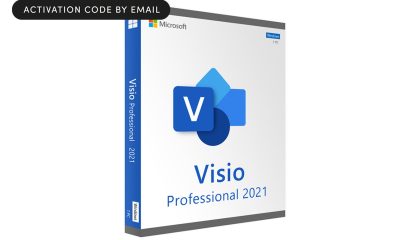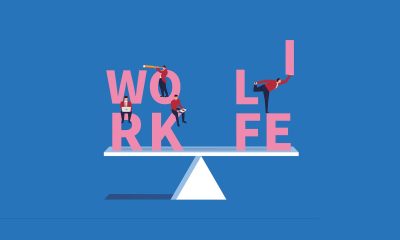Personal Finance
Best Self-Employed Retirement Plans

Being self-employed comes with plenty of benefits: a flexible schedule, more freedom and the chance to grow your career on your own. But it can also make saving for retirement harder.
Fortunately, there are plenty of ways to save without an employer-sponsored retirement plan. This guide will walk you through four of the best retirement plans for self-employed people, including IRAs and solo 401(k)s. Plus, read on for a comprehensive guide on how to choose the best workplace retirement plan for your lifestyle.
Our Top Picks for the Best Self-Employment Retirement Plans
-
Traditional Roth IRAs – Best for a low administrative burden
-
SEP-IRAs – Best for self-employed people with employees
-
Simple IRAs – Best for employers and employees
-
Solo 401(k)s – Best for flexible tax options
Put a gold-backed IRA into your golden years
Gold IRAs are similar to traditional retirement accounts, but they are backed by investments in gold and other precious metals, such as silver, platinum, and palladium. To get started, click on your state.
Start Investing Today
Best Self-Employed Retirement Plans Reviews
It can be hard to prioritize your retirement savings in an unpredictable economy — especially if you’re self-employed. In fact, a recent study shows that many people have stopped saving for retirement due to inflation.
But a retirement savings account is an investment in your future. Recent research shows that average healthcare costs in retirement are around $67,000, even with Medicare. So, it’s essential to start saving as soon as possible — even a few dollars a month will make a difference.
With the right retirement plan, you can save and minimize your upfront burden. It all comes down to picking the best plan for your career and lifestyle, which will depend on your goals, family, income and more. Below are four of the best self-employment retirement plans available in 2023.
Best for Low Administrative Burden: Traditional or Roth IRAs
Why we chose it: A Traditional or Roth IRA is idea for someone who is just starting out with self-employment. These accounts are tax-advantaged and have income eligibility limits, plus you can roll a 401(k) into your IRA, so you don’t lose your savings after leaving a job.
Pros
-
Easy to set up
-
Available to anyone under the income limits
-
Can incorporate 401(k) savings from a previous job
Cons
-
Relatively low contribution limits
-
No benefits for employees
-
Limited tax benefits for some couples filing jointly
HIGHLIGHTS
- Annual contribution limits:
- Eligibility:
- Tax advantages:
If you recently became self-employed and want to grow your retirement savings, a Roth or Traditional IRA is the easiest place to start. These accounts are available to anyone earning less than $153,000 (or $228,000 if you’re married and filing jointly) in the 2023 tax year. You don’t have to be self-employed — you can contribute to an IRA even if you’re traditionally employed and have a corporate retirement plan.
IRA contributions are currently limited to $6,500 per year, but if you’re over 50, you can contribute an additional $1,000 in catch-up contributions. The money you contribute to your IRA each year is invested into a portfolio of your choice: stocks, bonds, exchange-traded funds and other assets. You can start to withdraw your funds after you reach the legal retirement age of 59 ½.
It’s possible to access your retirement savings before you reach retirement age. However, there will be a penalty. Most financial institutions charge an early withdrawal penalty of around 10%, which is why you shouldn’t rely on your IRA as a rainy-day fund — but it can be accessed in an emergency.
Traditional and Roth IRAs function similarly but have slightly different tax benefits. Here’s an overview:
-
Traditional IRAs – You can contribute your pre-tax dollars, and your savings grow tax-deferred. When you withdraw your retirement savings after age 59 ½, they will be taxed as current income.
-
Roth IRAs – These accounts only allow you to contribute after-tax dollars. Your savings will grow tax-free, and you can make tax-free withdrawals after you reach retirement age.
You can open an IRA with a broker, robo-advisor or other financial institution. Opening contribution amounts will vary depending on your chosen account, but most allow you to roll your existing 401(k) contributions into your account. The best Roth IRA accounts have no monthly fees and come with planning tools to help you maximize your contributions.
You may not want to open a Traditional or Roth IRA if you expect to earn more than the maximum income limit within the next year or if you’re looking for higher contribution limits. These accounts are best for people who want to start saving with minimal upfront costs.
Best for Employers-Only: SEP-IRAs
Why we chose it: SEP-IRAs help small business owners invest in their employee’s retirement while maximizing their own savings. Because they have higher contribution limits than Traditional IRAs and are non-exclusive, you can still contribute to another retirement account as your income grows.
Pros
-
Contributions can be applied to the prior year’s taxable income
-
Easy option for small business owners
-
Non-exclusive to other IRA accounts
Cons
-
Contribution limits vary based on annual income
-
No catch-up contributions for people 50 and older
-
Employer contributions must be proportional for each employee
HIGHLIGHTS
- Annual contribution limits:
- Eligibility:
- Tax advantages:
A Simplified Employee Pension Plan, or SEP-IRA, is a type of Traditional IRA designed for small business owners to contribute to their employee’s retirement funds. Contributions to these accounts are tax-deductible and grow tax-deferred until you reach retirement age. Like other IRAs, SEP-IRA contributions can be accessed early with a 10% withdrawal penalty.
The annual contribution limits for a SEP-IRA are a little more complicated than with other IRAs. There are two ways to meet the limit. Your contributions have to meet the lesser of:
-
25% of compensation
-
$66,000 (for the 2023 tax year)
Contributions for each employee are also limited to 25% of their compensation. That compensation amount is capped at $330,000 per employee. In other words, you can only contribute 25% of an employee’s income if they earn less than $330,000 annually.
SEP-IRA contributions have to be equal for each employee. As the business owner, you also qualify as an employee. So, if you contribute 10% of your net self-employment income to your SEP-IRA each year, you must also contribute 10% of each eligible employee’s income. Each employee owns and controls their own account.
Because of those strict contribution requirements, a SEP-IRA is best for a self-employed person or a business owner with only one or two employees. Larger businesses will benefit more from other contribution plans like employer-matched 401(k)s or Simple IRAs. This could be a great self-employed tax-deferred retirement plan for a couple or professional partners who own and manage a business together.
Best for Employers and Employees: SIMPLE IRAs
Why we chose it: A SIMPLE IRA is ideal for small business owners with 100 employees or less because they offer tax-deferred accounts with employer-match options. This means the employer doesn’t have to make all the contributions themselves.
Pros
-
Option to contribute as an employer and as an employee
-
Easy to manage
-
All contributions are tax-deductible
Cons
-
Not eligible if you have another retirement account
-
25% withdrawal penalty in first two years
-
Can’t rollover funds to another retirement account for the first two years
HIGHLIGHTS
- Annual contribution limits:
- Eligibility:
- Tax advantages:
A Savings Incentive Match Plan for Employees, or SIMPLE IRA, is designed for small business owners and their employees. These accounts have higher contribution limits than Roth or Traditional IRAs but lower limits than SEP-IRAs. The main benefit for employers is that they can match employee contributions but don’t have to make proportional contributions for every eligible employee.
Another key benefit of a SIMPLE IRA is that you can contribute both as an employer and an employee of your business, maximizing your savings. However, you cannot open a SIMPLE IRA if you have another retirement account, like a Roth IRA or 401(k). You also can’t roll these funds into another type of account for the first two years.
Employees can choose to opt in to your business’s SIMPLE IRA plan and contribute a portion of their monthly paycheck. As the business owner, you can choose to make matching contributions of up to 3% of the employee’s compensation or a fixed contribution of up to 2% for each eligible employee on the plan. Employees own and manage their own accounts and can choose the stocks, mutual funds and other assets they want to invest in, so there is less administrative burden for the business owner.
One downside of a SIMPLE IRA is that it has much higher withdrawal penalties in the first two years. That means it isn’t a reliable emergency fund within that time period, and you’ll lose a good portion of your contributions if you change jobs or close your business within two years of opening the account.
If you have over 100 employees or want higher contribution limits, you could opt for a 401(k) plan for your business. However, a SIMPLE IRA is easier to open and has minimal upfront costs, depending on the broker you work with. That makes it a better option for small, growing businesses.
Best for Flexible Tax Options: Solo 401(k)s
Why we chose it: A Solo 401(k) can be a great alternative to a traditional employer-sponsored 401(k) because they allow self-employed people to contribute as much as $66,000 per year and have no benefits for employees.
Pros
-
Can contribute as an employer and employee
-
High contribution limits
-
Contributions can be tax-deductible or post-tax
Cons
-
Can be complicated to maintain
-
Not available to business owners with employees
-
Limited investment options
HIGHLIGHTS
- Annual contribution limits:
- Eligibility:
- Tax advantages:
A Solo 401(k) is exactly what it sounds like: a 401(k) that you open and contribute to yourself without the help of an employer. You cannot contribute to this plan for your employees unless you employ your spouse. For that reason, this is the best choice for someone who owns a single-person business and wants higher contribution limits than an IRA account.
Solo 401(k)s let you double down on your retirement savings by contributing as both an employer and an employee (because you employ yourself). Like with a traditional 401(k), you can contribute through salary deferrals up to 100% of your compensation or up to $22,500. As an employer, you can contribute an additional 25% of your compensation up to a total contribution of $66,000 annually.
Self-employed people over the age of 50 can make catch-up contributions of up to $7,500 per year. Solo 401(k)s also let you choose if you want to contribute pre-tax or post-tax dollars. In other words, you can contribute your post-taxed income and enjoy tax deductions in retirement, similar to a Roth IRA account. There is a 10% penalty for early withdrawals, and people over the age of 72 must start taking distributions from their account each year.
The main drawback of a Solo 401(k) is the administrative burden. These accounts are more complicated to open and maintain than Roth or Traditional IRAs. They may also come with monthly account fees or trading fees, depending on your broker. Once you open one, you must file the correct paperwork with the IRS every year and maintain $250,000 in your account.
These types of accounts are available with most online brokers. A Solo 401(k) is best for a small business owner or single-person business whose income exceeds the limits for a Traditional or Roth IRA.
Other Self-Employed Retirement Plans We Considered
The four retirement plans reviewed above are popular choices for self-employed people and small business owners. But depending on your situation, you might be interested in another option. There are plenty of ways to save — here are a few other types of retirement plans for self-employed people we considered.
Money Purchase Plans
A money purchase plan is a workplace retirement plan in which the employer makes tax-deferred contributions on the employee’s behalf. Unlike a 401(k) or SIMPLE IRA, contributions to these types of plans are mainly made by the employer, not by the employee through salary deferment.
You might want to open a money purchase plan if you’re a business owner and want to retain crucial employees. However, these plans can be expensive to manage, so they aren’t ideal for a small or single-person business.
Pros
-
Contributions are tax-deferred
-
Good incentive for long-term employees
Cons
-
Expensive to maintain
-
Only for business owners with employees
Profit-sharing Plans
A profit-sharing plan is a type of workplace retirement plan that offers employees a share in the profits of the company. These plans are available to businesses of any size. They allow employees to save more than with a traditional 401(k) but aren’t ideal for a new business with limited profit margins.
Pros
-
Encourages employees to work toward a common benefit
-
High level of employer control
Cons
-
Limits profit margins for a small business owner
-
Contributions can vary each year
Non-qualified Plans
Non-qualified retirement plans are not eligible for tax benefits. Employees must pay taxes on their contributions before they are put into a retirement savings account. There are a few different types of non-qualified retirement plans, but they are all designed to benefit high-level employees and executives.
Pros
-
Allow high-level employees to save more
-
No contribution limits
Cons
-
Contributions aren’t tax-deductible
-
Not practical for a small business
Best Self-Employment Retirement Plans Guide
There’s more than one way to meet your comfortable retirement expectations. As more and more Americans break out of the traditional nine-to-five routine, retirement plans for self-employed people are becoming more accessible than ever. You just have to find the plan that works for you.
This guide will cover a few tips to help you find the best self-employed retirement plan for your needs.
What are self-employment retirement plans?
A self-employment retirement plan is any retirement savings account you open and contribute to on your own, without the support of an employer. You don’t necessarily have to be self-employed to open this type of account. Some plans, such as a Traditional or Roth IRA, are available to people who already have another type of retirement plan and want to expand their savings.
Whether you’re investing with a robo-advisor or looking for the best gold IRA companies, you can open a retirement account with any certified financial institution. Your contributions will be invested into high-yield assets such as bonds, where they can grow over time. Retirement accounts usually offer a higher APY than ordinary savings accounts because they are designed for long-term saving.
The main benefit of a self-employed retirement plan is that it comes with tax advantages. Depending on the type of plan you choose, you may not have to pay taxes on your contributions. If your contributions are taxed, like in a Roth IRA, you can use your savings as tax-free income once you retire.
How do self-employment retirement plans work?
You can open your own retirement account with a financial institution of your choice be it a traditional broker like Charles Schwab or Merrill Edge, a robo-advisor like Betterment or Ally Invest or an online broker like Fidelity Investments or TD Ameritrade. Depending on your plan, you may need a minimum opening contribution to get started. Then, you can contribute up to the limit for that account each year.
Some of the best retirement plans available to the self-employed include educational resources and tools to maximize your investments. You can also connect with a financial advisor to make sure you’re making the best investment choices.
If you change jobs, close your business or go back to an employer-sponsored retirement plan, you may be able to roll your savings over to a different type of account. For example, you can roll an IRA into an employer-sponsored 401(k) if the 401(k) sponsor allows it.
Like employer-sponsored retirement accounts, self-employed retirement accounts can’t be accessed until you reach retirement age. Most brokers have a 10% withdrawal fee if you need to withdraw your savings early. That’s why it’s important to have another financial asset like a savings account, investment account or physical asset for emergency spending throughout your life.
How to pick a self-employment retirement plan
As you look into self-employed retirement plan options, you’ll want to consider your current and future needs. The best retirement plan is one that will continue to benefit you for years to come.
IRAs are among the most popular types of self-employed retirement accounts. A Traditional or Roth IRA account is a good option for someone who is just starting to earn income on their own. SEP and SIMPLE IRAs allow business owners to make contributions for their employees, and Solo 401(k)s allow higher contributions if you can maintain at least $250,000 in your account.
Here are a few factors you should consider while comparing the best retirement plans for self-employed people.
How much do you want to save?
How much do you plan to set aside for retirement each year? The easiest self-employed retirement plans to open are Roth or Traditional IRAs, but these accounts come with very low contribution limits: $6,500 for the current tax year.
If you earn a higher income and can budget more than $6,500 per year for your retirement savings, you might be interested in a Solo 401(k). Like an IRA, this type of account doesn’t come with employee advantages but allows you to save more each year — up to $66,000 this year, plus an additional $7,500 if you’re over the age of 50.
Do you have other employees?
Some of the self-employed retirement plans reviewed in this article are best for an independent contractor or freelancer, while others are designed for business owners. If you have employees, you can open a retirement account that benefits you and your team.
A benefit plan for your employees has a lot of pros: it encourages employees to stay with the business, helps them save for their own retirement and can boost your personal savings. Some types of retirement accounts allow you to make contributions as an employer and an employee, doubling your annual contributions.
The downside of these types of accounts is that matching contributions for your employees will add to your business expenses. With a SEP-IRA, you are obligated to make contributions on your employees’ behalf. With a SIMPLE IRA, you can match employee contributions up to 3% of their compensation.
Do you have a spouse?
A self-employed retirement plan can help you and your spouse save for retirement. Each type of retirement plan has its own benefits for spouses filing jointly.
For example, if you and your spouse file jointly, the income eligibility requirement to open a Roth or Traditional IRA account goes up to $228,000. That limit applies regardless of your spouse’s income — if your spouse is a stay-at-home parent and your income is over $153,000, you can still contribute to a Roth IRA.
This benefit also extends to your spouse if they are employed and have an employer-sponsored retirement account. You can contribute up to $6,500 from each of your incomes on top of their employer-matched contributions, maximizing your combined savings.
If your spouse is an employee, they can benefit from your Solo 401(k) account. Solo 401(k)s only allow employee contributions if the employee is the spouse of the account owner. So, your spouse can contribute to the account through salary deferrals — even up to 100% of their compensation.
Tax-free withdrawals vs. tax-deductible contributions
There are two different types of tax benefits for self-employed retirement plans: tax-deductible contributions and tax-free withdrawals. To put it simply, you have to pay taxes on your retirement contributions at some point — it’s up to you if you want to pay when you contribute or when you withdraw your savings.
For example, if you have a Roth IRA, your contributions are in post-tax dollars. That means less value going into the account. But when you withdraw your savings after you reach retirement age, you can use them as a tax-free source of income. Pre-tax contributions allow your savings to gain more value upfront but will be considered taxable income when you withdraw them after you reach retirement age.
Neither of these options is necessarily better. It’s hard to know whether your income tax rate will be higher or lower by the time you reach retirement age. If you are currently in a low tax bracket and believe you will be in a higher tax bracket by the time you retire, post-tax contributions might be the best choice.
Best Self-Employment Retirement Plans FAQ
What percentage of self-employed have a retirement plan?
According to Pew Research, only about 13% of self-employed people who own a single-person business contribute to a retirement plan. About 17% of self-employed people in a two-person firm contribute to a workplace retirement plan like a SIMPLE or SEP-IRA.
How do corporate retirement plans affect taxes for self-employed?
If you are rolling the funds from your corporate retirement plan into a self-employed retirement plan, your savings will stay tax-deferred. You shouldn’t have to pay an early withdrawal fee as long as your funds are deposited directly into the new account.
In addition, you can have both a self-employed plan like an IRA as well as a corporate retirement plan like a 401(k). The tax benefits will apply to both plans.
How many different retirement plans can self-employed individuals contribute to?
Depending on the type of plan you have, you may be able to contribute to multiple retirement plans. A SIMPLE IRA doesn’t allow account holders to have another retirement plan. However, Traditional and Roth IRAs are compatible with any other type of retirement account, whether employee-sponsored or self-employed.
How much can you deduct from income with self-employed retirement plans?
The amount you can contribute to your self-employed retirement plan varies depending on the plan you choose. Traditional and Roth IRAs have a dollar limit, not a percentage limit. Other plans have a dollar and percentage limit.
For example, with a SEP-IRA, you can contribute up to 25% of your income or up to $66,000. Whichever amount is lower is your contribution limit.
How We Chose the Best Self-Employment Retirement Plans
We evaluated the best retirement plans for self-employed people by comparing them to other retirement options. A few crucial features we considered for this review include:
-
Maintenance and withdrawal fees
-
Contribution limits
-
Availability with multiple types of brokers
-
Accessibility
-
Administrative burdens
Summary of Money’s Best Self-Employment Retirement Plans
-
Traditional Roth IRAs – Best for a low administrative burden
-
SEP-IRAs – Best for self-employed people with employees
-
Simple IRAs – Best for employers and employees
-
Solo 401(k)s – Best for flexible tax options
© Copyright 2023 Money Group, LLC. All Rights Reserved.
This article originally appeared on Money.com and may contain affiliate links for which Money receives compensation. Opinions expressed in this article are the author’s alone, not those of a third-party entity, and have not been reviewed, approved, or otherwise endorsed. Offers may be subject to change without notice. For more information, read Money’s full disclaimer.
Read the full article here

-

 Passive Income6 days ago
Passive Income6 days agoThe One Microsoft Design Tool Business Owners Shouldn’t Miss
-

 Side Hustles4 days ago
Side Hustles4 days agoThe DOJ Reportedly Wants Google to Sell Its Chrome Browser
-

 Side Hustles4 days ago
Side Hustles4 days agoHow to Create a Unique Value Proposition (With Tips & Examples)
-

 Investing3 days ago
Investing3 days agoAre You Missing These Hidden Warning Signs When Hiring?
-

 Investing5 days ago
Investing5 days agoThis Founder Turned a Hangover Cure into Millions
-

 Investing6 days ago
Investing6 days agoYour Firsthand Experiences Shape the Way You Run Your Business — Here’s How Mine Shaped Me
-

 Make Money4 days ago
Make Money4 days ago7 Common Things You Should Never Buy New
-

 Investing4 days ago
Investing4 days agoGoogle faces call from DuckDuckGo for new EU probes into tech rule compliance By Reuters


















